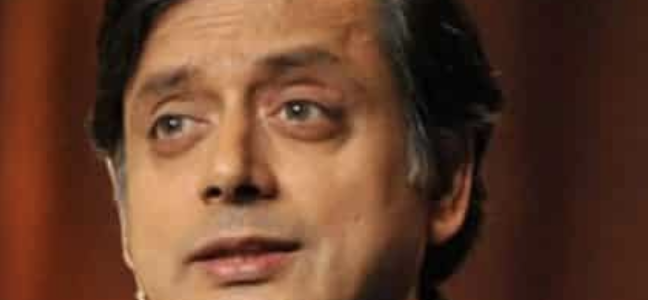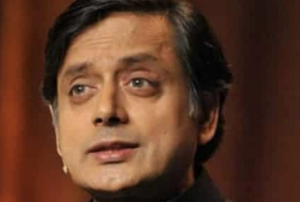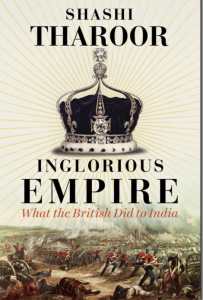
Chaos of the Empire

In the eighteenth century, India’s share of world economy was larger than Europe. By 1947 after two hundred years of British rule it had decreased six-fold. Beyond the conquest and deception the Empire blew rebels from cannon, massacred unarmed protesters, entrenched institutionalised racism and caused millions to die from starvation. The British imperialism justified itself as enlightened despotism for the benefit of the governed, and it is up to Shashi Tharoor to demolish this position, demonstrating how every supposed “imperial gift” from the railways to the rule of law – was designed in Britain’s interest alone. He demonstrates how Britain’s Industrial Revolution was founded on India’s deindustrialisation, and the destruction of its textile industry.
Inglorious Empire reveals the real story of the British in India – from the arrival of the East India Company to the end of the Raj revealing how Britain’s rise was built upon its plunder of India.
Inglorious Empire is a also a reminder of the need to start teaching unadulterated colonial history in British schools. Indians are not the only ones who need reminding the empire has a lot to answer for and the critical book makes very uncomfortable reading for Brits.
In 1700, when the British were mere traders clinging on to a few costal towns, the Emperor Aurangzeb ruled over the country that accounted for a quarter of the world’s economy. By the time the British left, India’ share of global GDP had sunk to 3 per cent. According to Tharoor, the rise of industrial Britain was financed by the depredations of the Raj. The soldiers of the East India Company smashed the handlooms the Bengal weavers, whose delicate silk and muslins were prized all over Europe. With Brexit on the door step, those Brits who speak so confidently about how Britain’s “historical and cultural ties” to India will make it easy to strike a great new trade deal must read Tharoor’s book and see the world through the eyes of the countries once colonised or defeated by Britain.
William Bentinck, governor of Madras and later governor-general, wrote that “the bones of the cotton weavers were bleaching the plains of India. Tariffs of 70 per cent and more were imposed on the textiles India produced, and cheap British cottons flooded the Indian market.. Bishop Heber, reported that the peasantry in the Company’s provinces are, on the whole, worse off, poorer and more dispirited than the subjects of the native princes. FJ Shore, a dissident British administrator, told the House of Commons that “every successive province, as it has fallen into our possession, has been made a filed for higher exaction, and it has always been our boast how greatly we have raised the revenue above, that which the native rulers were able to extort. Though India was rich in natural resources, would-be Indian industrialists like the Tata family were repeatedly baulked from setting up steel mills or digging coal mines, The last large-scale famine in India took place under British rule in Bengal in 1943, exacerbated by Churchill’s insistence that the grain must go to the troops and not to the people who grew it. Tharoor quotes Amartya Sen’s words, that there has never been a famine in a democracy with a free press, because public accountability ensures effective response,
Tharoor exposes the inglorious reality of Britain’s stained Indian legacy. Tharoor’s book arose from a contentious Oxford Union debate in 2015, where he proposed the motion “Britain owes reparations to her former colonies”.
Far from crediting Britain for India’s unity, democracy, the rule of law, railways, English education, tea, cricket and enduing parliamentary democracy, Shashi Tharoor focuses on the dismantling of existing political institutions, the fomenting of communal division and systematic political discrimination with a view to maintaining British domination. In 1859, the then British governor of Bombay, Lord Elphinstone, advised London that “Divide et impera was the old Roman Maxim, and it should be ours”.
British Hierarchical society with an entrenched class system was similar to the caste system in India. The colonial administrators often wrote reports and classified Indians based on their language, religion, sect, caste, sub-caste, ethnicity and skin colour. Mega conflicts between Hindus and Muslims began under colonial rule as the religion was the fundamental division in Indian society.
In 1947, the partition left behind a million dead, 13 million displaced billions of rupees of property destroyed and the3 flames of communal hatred spread across India.. Neither did Britain work to promote democratic institutions under imperial rule, as it liked to pretend, nor build self-government from village level up, the East India Company in fact destroyed what existed. The British ran government, tax collection and administered what passed for justice. The crown eventually took charge of the country, In 1920, under the Montagu-Chelmsford “reforms”, Indian representatives on the councils –elected by a franchise so restricted and selective that only one in 250 Indians had the right to vote – would exercise control over subjects the British did not care about, like education and health, while the real power of taxation and law and order would rest with the British governor of the provinces. It is rich to oppress, torture, imprison, enslave, deport and exclude a people for 200 years, and then take credit for the fact that they are democratic at the end of it.
From 1757, the British astutely fomented cleavages among the Indian princes, by divide and rule and steadily consolidated their dominion.
Shashi Tharoor, a Congress MP in India, served for twenty-nine years at the UN culminating as Under-Secretary-General. He has been named by the World Economic Forum in Davos in 1998 as a Global Leader of Tomorrow.
Inglorious Empire: What the British Did to India By Shashi Tharoor, Hurst £20/$27.95

